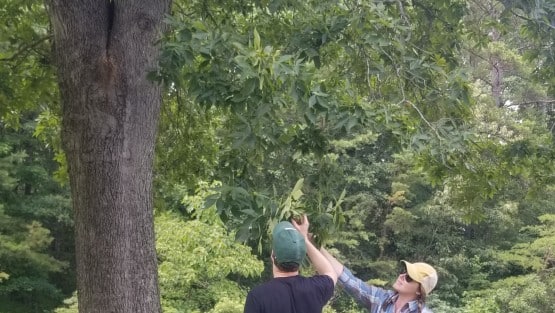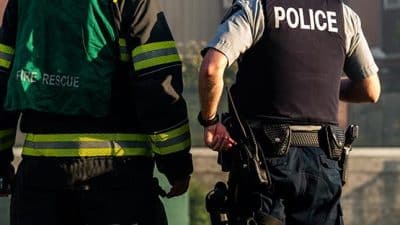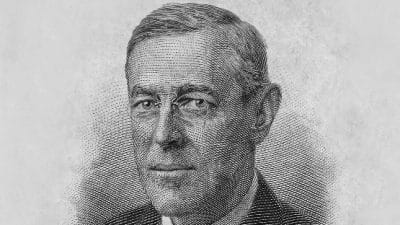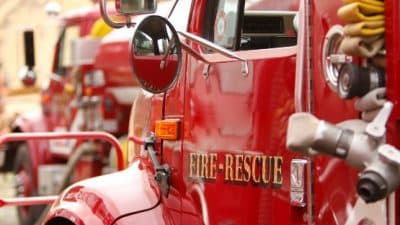
Bald eagles are conservation darlings. Once lurching toward extinction, eagles flew off the endangered species list as the number of mating pairs nationwide soared from a low of a few hundred in the 1960s to nearly 10,000 by 2010.
And the Chesapeake Bay region has continued to burnish its reputation as one of the country’s top bald eagle breeding grounds, registering a nearly fivefold leap in paired males and females during the past two decades.
But can there be too much of a good thing? Perhaps so, according to one of the region’s leading avian researchers.
Bryan Watts, founder and director of the Center for Conservation Biology at Virginia’s College of William and Mary, has authored dozens of academic papers on bald eagles over a more than 30-year career. In the past 20 years or so, he said, he has documented a shift in the behavior of adult males during the nesting season.
The change was subtle at first. But as Watts continued to monitor the phenomenon, he realized that he was watching a population grappling with the limits of its recovery.
“It’s a natural part of the recovery process,” he said. “The species are just going to have to work it out for themselves.”
The main cause of the eagles’ near demise half a century ago, experts say, was the widespread use of the pesticide DDT, which caused the shells of eggs to become too thin to withstand incubation. Its banning in 1972, coupled with water pollution crackdowns, habitat restoration and reintroduction programs, are credited with bolstering the rebound.
Along the Chesapeake Bay and the tidal reaches of its rivers, the eagle population exploded. At one point, their numbers were doubling every eight years, Watts said.
“It’s obvious when you’re in that time of ascent, something is going to happen,” he said. “You can’t stuff eagles into little spaces here and there.”
That’s not for lack of trying. Today, eagles are frequently spotted in suburban backyards, airports, farm fields and other places where a generation ago a sighting would have been virtually unthinkable.
“Eagles have shown themselves to be more adaptable than we expected,” Watts said.
But now, he says, they seem to be running out of room in the Bay region. The most notable consequence has been the growing population of so-called “floaters,” breeding-age eagles of either sex with no territory of their own. The crowding has become so intense that researchers now believe that the floater population is six to eight times greater than the breeding population.
Breeding males that do have nests and mates find themselves at near-constant threat of losing them to intruders.
“These things can be bloody fights to the death,” Watts said. “It’s a jungle out there for these birds.”
Females mostly stay in the nest, incubating eggs or, after the hatch occurs, feeding the young. Traditionally, males would spend most of their time hunting food for the nestlings. Sometimes, those males would be found on a nearby perch, guarding their nests from would-be interlopers.
That, though, represented the minority of cases. During the 1999–2004 period, a male sentry was present at only about one-third of the nests that Watts encountered.
By the early 2010s, that figure had jumped to more than 60% of nests in the Bay area. By the 2020s, it had surpassed 70%. Something was happening, Watts said, and what he suspected was that population pressure had “forced the male … to stay home and protect his nest and his female from these floaters.”
Watts and his colleagues published research about the floaters a decade ago. What wasn’t clear at that time was whether that behavioral change — males bringing less food back to the young — was impacting nesting success.
Now, Watts believes he has gathered enough data for a paper. In a blog posted on his research center’s website in January, he previewed the findings. The initial numbers paint a portrait of distress for many eagle pairs.
The typical number of chicks per nest has declined since 1999 from two to one, the breeding failure rate has jumped from 17% to 24%, and the percentage of pairs producing three chicks has dropped from 13% to 5%. Watts said he has also observed an uptick in “brood asymmetry” — significant size differences between sibling chicks because one of them is underfed.
“The brood is being trimmed to match the incoming food,” Watts said.
But is he worried? Not in the least.
“It’s certainly nothing to be alarmed about,” the longtime researcher said.
The Chesapeake region of today is home to more than 3,000 mating pairs, which represents the largest concentration of eagles in the lower 48 states. Watts said that their numbers remain strong, even in the face of threats like chronic lead poisoning — now known to be widespread in golden and bald eagles.
“The Bay is one of the most productive aquatic ecosystems in the country,” he said. “If you look around the range, there’s nothing really comparable.”
Jeff Cooper, an eagle expert with the Virginia Department of Wildlife Resources, said his biggest concern with the eagle population is trying to minimize conflicts with humans. Discouraging the birds from nesting near airports is a big part of his job these days.
Like Watts, he doesn’t see a problem with fewer young eagles being produced in the Bay’s tidewater region. Nor does he see a need for human intervention.
“[Overpopulation] is probably the primary driver for productivity going down,” Cooper said. “You just let that play out. We’re reaching equilibrium. The population is going to remain large because the Bay can support it.”
Jeremy Cox is a Bay Journal staff writer based in Maryland. You can reach him at [email protected]. This article first appeared in the April 2023 issue of the Bay Journal and was distributed by the Bay Journal News Service.










